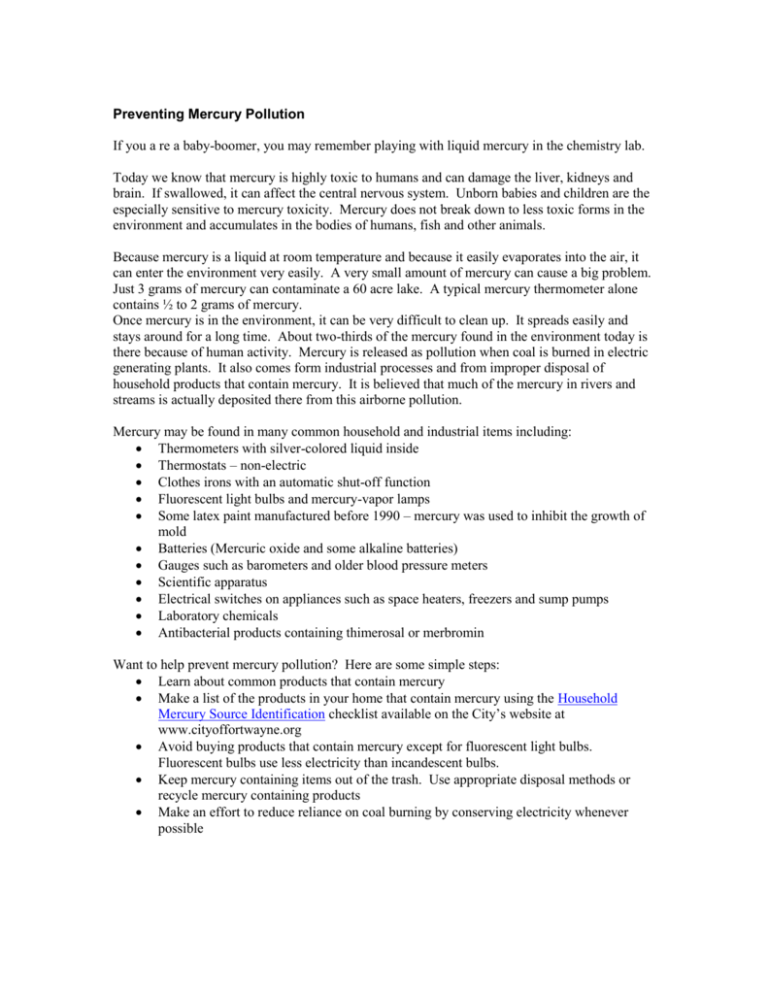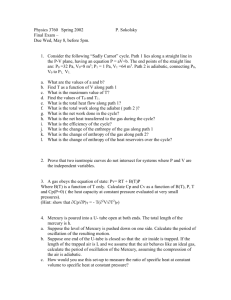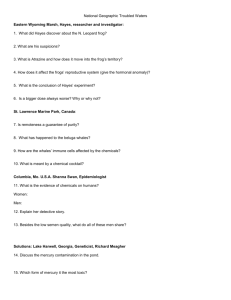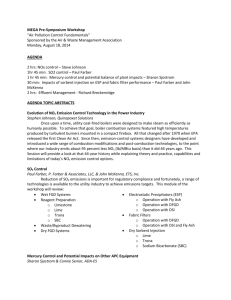Preventing Mercury Pollution
advertisement

Preventing Mercury Pollution If you a re a baby-boomer, you may remember playing with liquid mercury in the chemistry lab. Today we know that mercury is highly toxic to humans and can damage the liver, kidneys and brain. If swallowed, it can affect the central nervous system. Unborn babies and children are the especially sensitive to mercury toxicity. Mercury does not break down to less toxic forms in the environment and accumulates in the bodies of humans, fish and other animals. Because mercury is a liquid at room temperature and because it easily evaporates into the air, it can enter the environment very easily. A very small amount of mercury can cause a big problem. Just 3 grams of mercury can contaminate a 60 acre lake. A typical mercury thermometer alone contains ½ to 2 grams of mercury. Once mercury is in the environment, it can be very difficult to clean up. It spreads easily and stays around for a long time. About two-thirds of the mercury found in the environment today is there because of human activity. Mercury is released as pollution when coal is burned in electric generating plants. It also comes form industrial processes and from improper disposal of household products that contain mercury. It is believed that much of the mercury in rivers and streams is actually deposited there from this airborne pollution. Mercury may be found in many common household and industrial items including: Thermometers with silver-colored liquid inside Thermostats – non-electric Clothes irons with an automatic shut-off function Fluorescent light bulbs and mercury-vapor lamps Some latex paint manufactured before 1990 – mercury was used to inhibit the growth of mold Batteries (Mercuric oxide and some alkaline batteries) Gauges such as barometers and older blood pressure meters Scientific apparatus Electrical switches on appliances such as space heaters, freezers and sump pumps Laboratory chemicals Antibacterial products containing thimerosal or merbromin Want to help prevent mercury pollution? Here are some simple steps: Learn about common products that contain mercury Make a list of the products in your home that contain mercury using the Household Mercury Source Identification checklist available on the City’s website at www.cityoffortwayne.org Avoid buying products that contain mercury except for fluorescent light bulbs. Fluorescent bulbs use less electricity than incandescent bulbs. Keep mercury containing items out of the trash. Use appropriate disposal methods or recycle mercury containing products Make an effort to reduce reliance on coal burning by conserving electricity whenever possible







